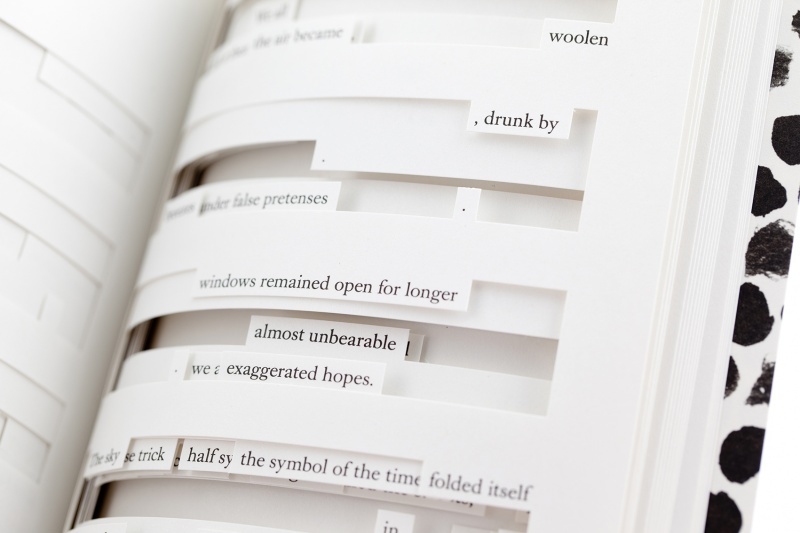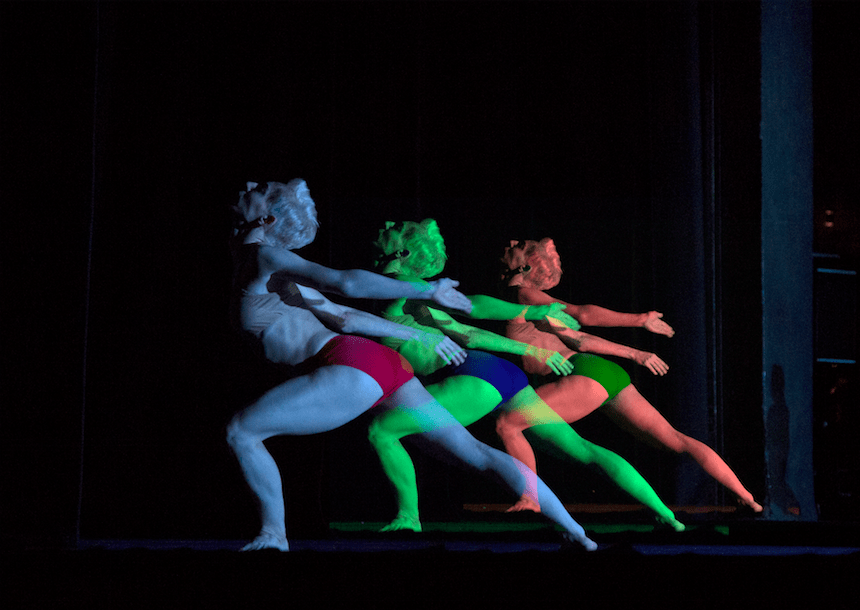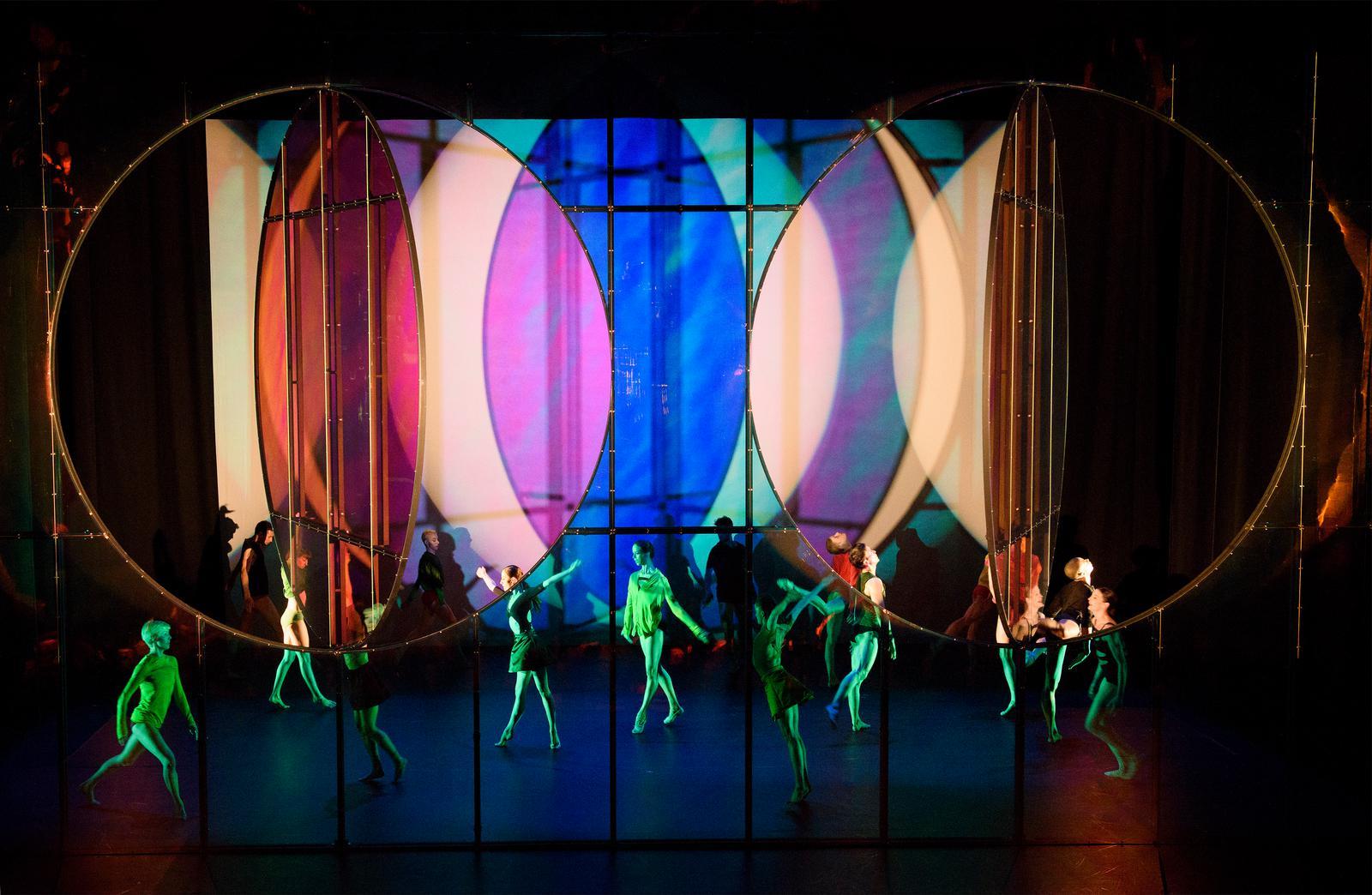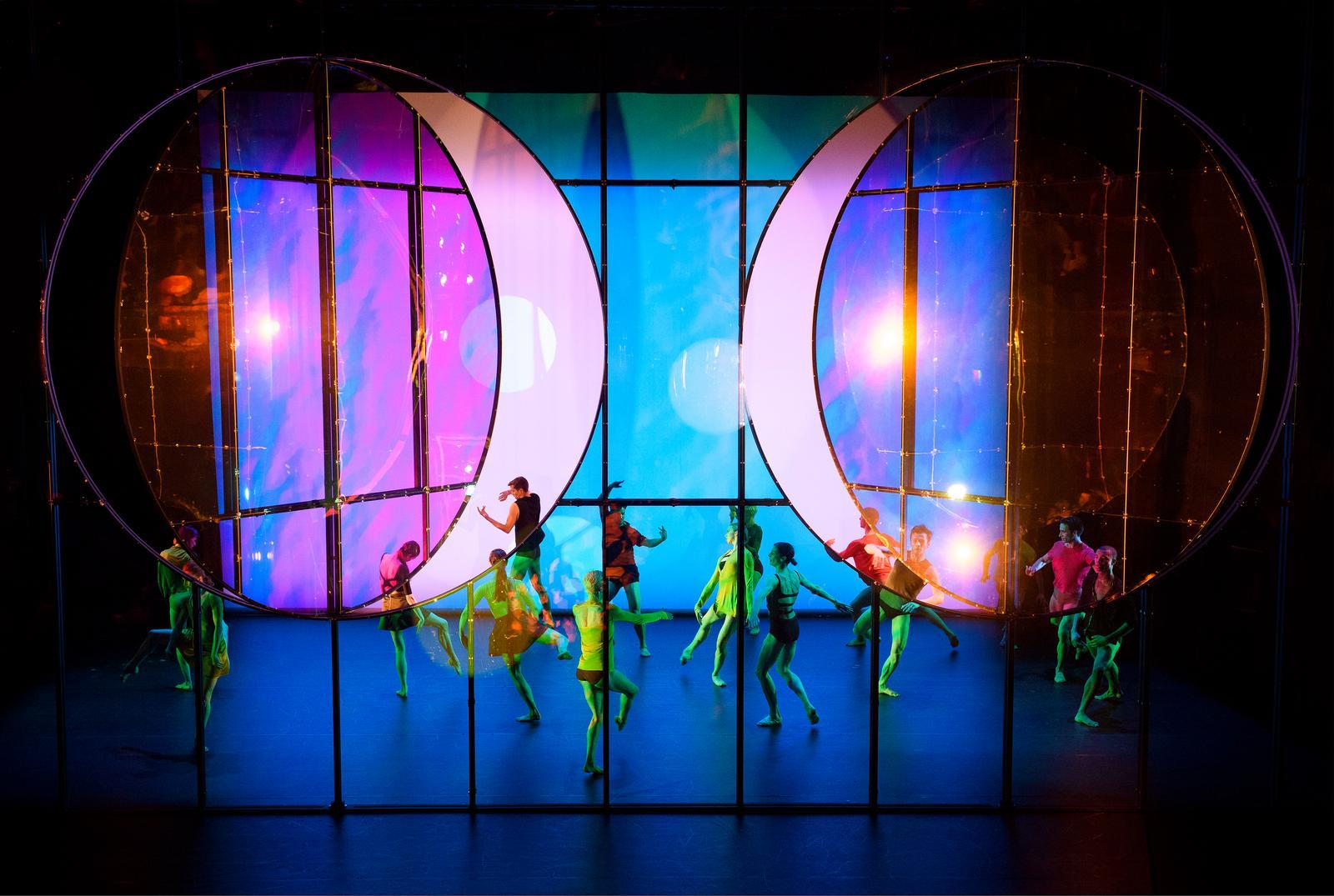Tree of Codes is a peculiar book; the 2010 title by Jonathan Safran Foer takes a copy of another book (Bruno Schulz’s The Street of Crocodiles) and cuts out most of the words on its pages to carve out a new—albeit abstract—story. The book is a work of poetry with a lot of open, rectangular holes cut out of its pages, making it look like a collaged piece of fridge magnet poetry, or perhaps a lost dada masterpiece.
Six years on from Jonathan putting scalpel to page, and Tree of Codes has been turned into a ballet, choreographed by British dance pioneer Wayne McGregor with music scored by Jamie xx, and a psychedelic set design created by Danish-Icelandic artist Olafur Eliasson. His work intersects between architecture and fine art, sculpture and environment. He has, for example, created projects like Little Sun, where he distributed handheld solar lights in countries without electricity, like Ethiopia.

makes its London premiere at the Sadlers Wells Theatre from March 4 to 11. And according to Eliasson, the ballet is not a direct illustration of the book but an interpretation, as 15 dancers meander through his visual concept to “mirror the sculptural aspects of the book.”
Like most of us, he started by questioning how such an abstract book could be turned into a ballet. “I asked myself, ‘how do I make a text into a space?'” says Eliasson on the phone from his Copenhagen home. “A text is already a space; it’s never a 2D space with black ink, it’s really about something that’s architectural.”
Following the same approach as the book, Eliasson wanted to mirror the concept. “Jonathan created a book by removing rather than adding, so how do you create something by taking away rather than adding?” he asks. “The book became the platform our piece is standing on; it grew out of that platform. It’s not an illustration of a text; it became an authentic piece of creativity.”
It all started last year at the Manchester International Festival when festival director Alex Poots, who encourages interdisciplinary art projects, introduced Eliasson to McGregor and Jamie xx. Following Poots suggestion, they worked on the piece to premiere last year in Manchester. It has since grown to include several tour dates in 2017; playing at the Paris Opera from February 3 to 23, and in Aarhus, Denmark as part of the Aarhus 2017 European Capital of Culture from April 27 to 29.

Its success has come as a surprise to Eliasson, considering contemporary dance is not a widely-recognized art form. “You could say the same about art,” he suggests. “The idea of combining modern ballet with popular music, I love the synergy in it.” The piece has drawn criticism in theater reviews for its lack of narrative and emotion. When asked, Eliasson says that the piece was actually led by feelings, though in more of a way that could be compared to the color field paintings of Mark Rothko. “The piece isn’t a conversation between Jamie, McGregor and I because that would limit it to language,” he says. “It was more about feelings, things that are hard to describe in words but feel right.”
Eliasson attempted to fill the gap between the dancing and the music with an abstract approach. “It gave me a great space to fill as an artist,” he says. “On the one hand it was hard work, but it was informal as well as a little bit unpredictable—I presented half of an idea, McGregor brought half an idea and Jamie presented some sketches. We brought them together, that’s how it evolved.”
Jamie xx’s music gives the show an atmospheric quality, the same quality that Eliasson loves in the xx. “It’s not me listening to music, it’s as if the music is listening to me,” Eliasson begins. “This is so fundamental especially in times of marginalization, Brexit, Trump and refugees, there is radicalization and extremism. There are so many people not being listened to. Cultural capital is the ability to listen to people who are otherwise exploited, marginalized and abused. In that way, Jamie, Wayne and I are working towards the ability to touch someone.”

Eliasson’s stage design starts out at the beginning of the show as pitch black with bright white light bulbs circling around like fireflies. Slowly, colored light enters the stage like a balmy sunset, it then grows into something more otherworldly. The striking, vintage technicolor palette bathes dancers in hues of green, blue and orange with a significantly retro 50s vibe alongside a stage filled with mirrors. “I was excited about it being expressionistic, you can see the dancer in the front and back at the same time,” he says. “With deconstructed and organic body movements, things become unpredictable.”
The circle and the crescent moon are common shapes onstage, suggesting the set design is inspired by planets in the galaxy. “Atmospheric questions are essential,” Eliasson states. “In reality, we sit on a hinge and swing back and forth between what is real and what is not. I’m not so interested in social theory, I deconstruct and construct.”
Another point of inspiration was science, specifically, the prism of light which separates white light into a spectrum of colors (think the cover of Pink Floyd’s Dark Side of the Moon). “With a prism, you make the invisible visible, you see something that is not there, and you see what is there through a different lens,” Eliasson explains. “It offers a new perspective, especially when you see both the lens and through the lens at the same time. We take for granted what is real.”
In Tree of Codes, the art goes beyond the stage and into the audience. For everyone entering the theater, they become a part of the stage design with their own shadows, which are projected onto the walls in color. “It’s about the power of the crowd,” says Eliasson. “There has to be a stronger appreciation of the role of the audience in state-driven systems, such as theatre. The audience are not consumers, they are producers.”
Credits
Text Nadja Sayej
